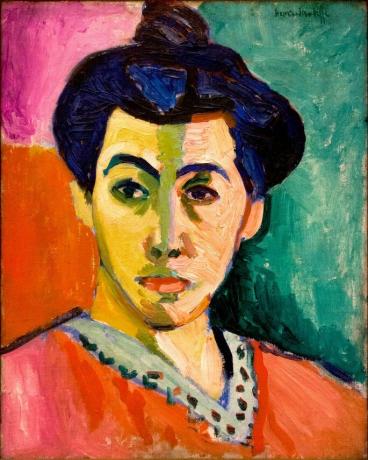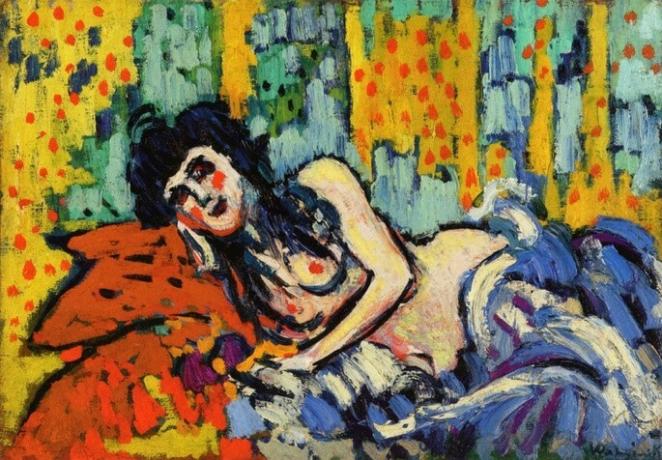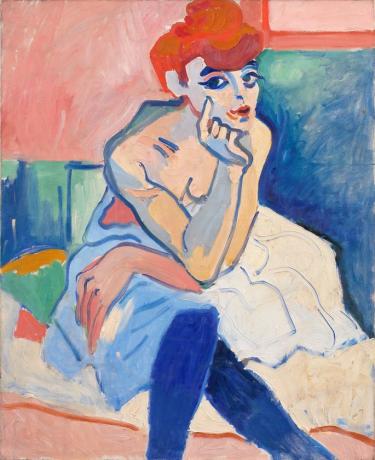Fauvism: what is it, characteristics, artists and works
Fauvism or Fovism was a pictorial movement that had its origin in 1905 in Paris, France. The plastic maxim of Fauvism was the exaltation of color, based on the idea that creation arose from instinct rather than from intellect or feelings.
Now, what are the characteristics of Fauvism? How and when did Fauvist art originate? What does the word Fauvism mean and where does it come from?
Characteristics of Fauvist or Fovista painting

In this segment, we will be able to see what are the main characteristics of the Fauvist movement.
Exaltation of color
Although Fauvism is still tied to the representation of nature, that is, of recognizable objects, it does not seek the naturalistic representation, but to exalt the value of color itself, which they prefer to use in its pure state and in a direct.
Hence, the Fauvist work boasts a daring coloring. He uses colors brutally and with relative arbitrariness, deliberately seeking a sense of dissonance that breaks the association of color with the representation of reality as it is conceived.
Instinct and impulsiveness
More than inquiring about the artist's feelings or thoughts, Fauvism exhibits the flow of creative instinct. Consequently, the lines and colors result from impulsive gestures, thereby trying to achieve genuineness. attributed to children or to the "wild", that is, to what has not been "touched" by the civilizing order dominant.
Disinterest in perspective and modeling

Another feature of Fauvist art was the lack of interest in spatial depth, perspective and modeling, and with it, chiaroscuro. The figures in the Fauvist plane are usually flat, and are sometimes outlined by thick contours. Thus, the pretense of constructing images that imitate the visible world vanishes.
Spontaneous and loose strokes
In coherence with the sense of instinct, in Fauvist painting spontaneous strokes dominate. From the point of view of composition, these lines appear loose and are usually definitive, that is, not subject to refinement and finishing, as this would go against "intuition". Thus, many times these lines led to spots that created particular effects.
Absence from outdoor work
While movements like Impressionism had allowed themselves to work in the open air, Fauvism, like other currents, returns to the I work in the studio, since he is not interested in the observation of nature but in plastic language, with an emphasis on color and its ability expressive.
Fauvism themes
The themes of Fauvism could span the spectrum of portraits, landscapes, everyday objects, the idyllic relationship of human beings with nature, and interior scenes.
You may also like:
- Avant-garde: characteristics and representatives of the avant-garde.
- Expressionism: what is it, characteristics and representatives.
Historical context and origin of Fauvism

Towards the end of the 19th century, art began an important transformation, the result of many processes that converged. For example, the influence of romanticism had encouraged subsequent generations to seek a personal and original language. On the other hand, the appearance of image technologies, such as the photographic camera, influenced the way in which the function of Western art was conceived.
Thus, by the last third of the 19th century, risky proposals such as impressionism, post-impressionism, symbolism, naive art and other currents were already seen. Fauvism, in fact, was contemporary with German Expressionism and, like it, defended freedom of expression.
Fauvism managed to find its way into the Salon d'Automne in Paris in 1905, which dedicated room number eight to the artists Henry Matisse, Maurice Vlaminck and André Derain. But the characteristics of his works scandalized the audience and, especially, some more conservative critics. The paintings showed strident colors and incoherent with "reality."
This was a shocking and challenging spectacle, so the critic Louis Vauxcelles expressed himself this way: “Donatello chez les fauves”, which in French means: “Wow! Donatello among beasts ”. Thus, what began as a disqualification, was assumed by the artists as the name of the new style: “Fauvism”, the “wild beasts” movement.
It cannot be said that Fauvism was a movement with a programmatic manifesto, as Futurism was, for example. However, its artists shared an interest in the exaltation of color and the intention of rupture. Consequently, by 1908 Fauvism faded. However, his influence was fundamental for the first generation of avant-garde.
It may interest you:
- Post-impressionism: its most important characteristics, authors and paintings
- Artistic movements of the 20th century
Main artists and works of Fauvism
Henri Matisse (1869-1954)

French painter, sculptor, lithographer and draftsman. He was interested in the composition more than the figures themselves. He abandoned perspective, spatial depth, drawing and chiaroscuro to treat color as a value in itself. He was influenced by Vincent van Gogh and exotic art. He was a figure of great importance in the work of Pablo Picasso and other artists of his generation.
You may also like: Cubism: characteristics, representatives and works.
André Derain (1880-1954)

Painter of French origin. He worked with the use of bright colors, energetic strokes, and seamless brushstrokes. He was widely influenced by Cézanne, sparking his interest in Cubism once the Fauvist tide waned. Years later, he returned to a type of painting that has been described as “neoclassical” in tone, a style that he continued to develop from then on.
Maurice de Vlaminck (1876-1958)

French painter, from a family of musicians. He ventured into different currents such as realism and expressionism, and was greatly influenced by the unique work of Vincent van Gogh. He was close friends with Derain, with whom he established a studio from which they worked together.
Raoul Dufy (1877-1953)

French painter, engraver and decorator. In his early days, he dabbled in the Impressionist style of the late 19th century. Thanks to Matisse's influence on him, he approached the Fauvist aesthetic. His work was characterized by the use of geometrization and contrasting tones.



